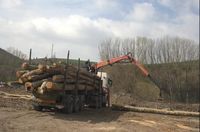Spain is once again in the throes of a devastating wildfire season, with the summer of 2025 shaping up to be one of the most destructive in recent memory. On August 17, wildfires swept across the country, scorching over 115,000 hectares of land, forcing thousands to evacuate their homes, and tragically claiming three lives, according to reports from multiple outlets including The Conversation and official Spanish government sources. As dozens of fires continue to rage across multiple regions, the country is grappling with not only the immediate crisis but also the longstanding challenges that make these disasters so frequent and severe.
This year’s fires have been especially harsh, affecting regions such as Tarifa, Zamora, the Madrid area, Galicia, and Extremadura. Perhaps most heartbreakingly, the UNESCO-listed natural park of Las Médulas in León has been completely wiped out by the flames, a loss that resonates deeply with both conservationists and local communities. The scale of destruction is staggering, and while the numbers fluctuate from year to year—over 310,000 hectares burned in 2022 compared to around 48,000 in 2024—the impact on biodiversity, cultural heritage, and rural livelihoods is always profound.
Prime Minister Pedro Sanchez has been quick to respond, visiting the affected areas to witness the devastation firsthand and offer support. His presence comes amid growing calls for the Spanish army to step in and bolster firefighting efforts, as local resources are stretched to their limits. For many residents, the sight of their homes and forests consumed by flames is becoming an all-too-familiar nightmare, one that returns each summer with relentless regularity.
But why does Spain, year after year, find itself battling such catastrophic wildfires? Experts point to a combination of climatic, ecological, and socio-economic factors. The so-called "fire triangle"—heat, oxygen, and fuel—explains how fires start and why they are so hard to stop once underway. Heat can come from a lightning strike, an accidental spark, or, as is most often the case in Spain, human carelessness. In fact, over 90% of fires in Spain are caused by human activity, whether intentional or accidental, according to The Conversation.
Once a fire is ignited, oxygen in the air feeds the flames, while fuel—typically dried vegetation and undergrowth—allows them to spread rapidly. The problem of fuel is particularly acute in Spain due to rural depopulation. As large inland areas are abandoned and no longer used for farming or grazing, vegetation is left to accumulate unchecked, creating a vast reserve of natural kindling. This buildup turns the countryside into a tinderbox, just waiting for the next spark.
“Putting out a fire should be a last resort – if it comes to this, then it is already too late,” notes a forestry expert cited by The Conversation. The real key, they argue, is not just fighting flames but actively managing the landscape to keep fuel levels in check. This doesn’t mean stripping forests bare; rather, it involves careful stewardship to maintain healthy, biodiverse ecosystems that are less prone to catastrophic burns.
To that end, a growing chorus of voices is advocating for a shift in how Spain values and manages its forests. The solution, they say, lies in building sustainable rural economies that revolve around the use of forests—not just for timber, but for a range of products and services. These include extensive livestock farming, mixed agriculture, tourism, and the harvesting of non-timber products. Such activities help keep vegetation under control, create jobs, and breathe life back into what has been dubbed “la España vaciada” or “hollowed-out Spain.”
Of course, developing these rural economies requires investment and innovation. Fortunately, several projects are already underway. Initiatives like PRISMA, BIOVALOR, and Bio+Málaga are exploring ways to turn forest management into employment and economic opportunity for rural communities. Collaborative efforts such as SCALE-UP, RIBES, and BioRural are bringing together regions across Europe to share best practices and scale up successful models. These projects are reimagining forests not only as natural spaces but also as engines of local development and resilience.
Technology, too, is playing a crucial role in the fight against wildfires. In Navarre, for example, emergency services have deployed a sophisticated geographic information system that maps risk areas, visualizes access routes, and coordinates responses in real time. This data-driven approach allows authorities to pinpoint where flammable plant matter is accumulating, identify neglected paths and roads, and prioritize areas that require urgent attention. By focusing on prevention rather than simply reacting to fires as they occur, resources can be allocated more efficiently and effectively.
Among forestry workers, there’s an old saying: “Summer fires are extinguished in winter.” This maxim underscores the importance of year-round management and the circular “bioeconomy” that can arise from well-tended forests. By valuing forests for the full range of benefits they provide—not just as sources of timber or recreation, but as vital parts of the rural economy—Spain can reduce the threat of wildfires while supporting biodiversity and rural livelihoods.
Yet, as the events of August 2025 make painfully clear, there is still much work to be done. Thousands of people remain displaced, dozens of fires continue to burn, and the scars on the landscape—and on the collective psyche—will take years to heal. The loss of Las Médulas, a site of immense natural and historical significance, is a stark reminder of what is at stake.
Looking ahead, the opportunity for a more prosperous and resilient future lies in Spain’s forests. By investing in sustainable management, supporting rural economies, and harnessing the power of technology, the country can not only reduce the risk of future disasters but also ensure that its forests remain “more useful, more biodiverse, and more alive,” as one expert put it. For now, though, the immediate priority is to bring the current fires under control and support those whose lives have been upended by this summer’s inferno.
Spain’s wildfire crisis is a complex challenge, but also a call to action—a reminder that prevention, innovation, and community are the best tools for protecting both people and the land they call home.

